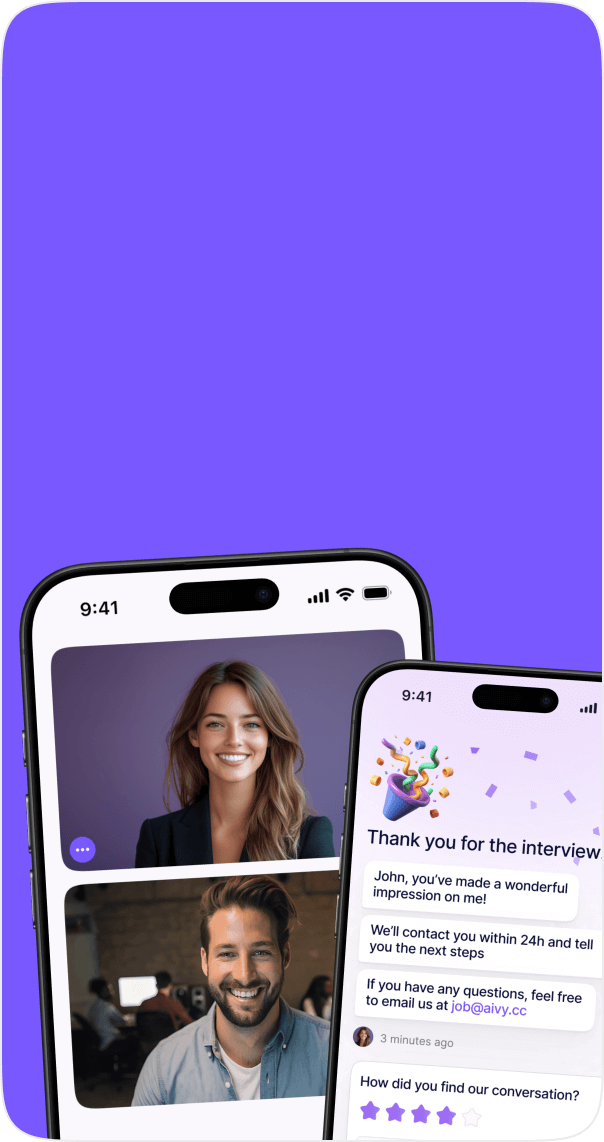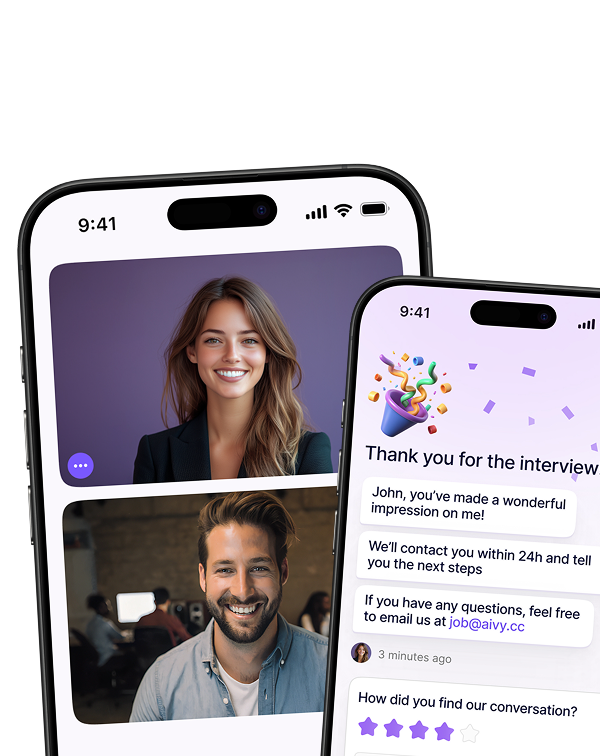Mar 31, 2025
Discover how AI solutions can replace outdated resume screening methods, speeding up hiring processes and boosting HR team efficiency.
The AI revolution in HR: Are you really leading or just pretending?
In our recent conversations with clients and potential partners across the HR landscape, we've noticed a peculiar pattern: nearly everyone talks enthusiastically about AI implementation, but when we look closer, there's often a significant gap between rhetoric and reality.
Many companies are either completely stalled in their AI adoption journey or - perhaps more concerning - creating an illusion of progress while fundamental processes remain unchanged. This disconnect between AI ambition and actual implementation might be the most significant missed opportunity in modern HR.
Many companies are either completely stalled in their AI adoption journey or - perhaps more concerning - creating an illusion of progress while fundamental processes remain unchanged. This disconnect between AI ambition and actual implementation might be the most significant missed opportunity in modern HR.
The uncomfortable truth about AI adoption
LinkedIn's January 2025 Work Change report exposes the uncomfortable truth: 88% of C-suite executives claim AI adoption is a priority. Everyone's talking about AI at conferences, in board meetings, and in company-wide announcements. Yet when we examine actual workplace practices, something doesn't add up.
The reality? Most organizations are stuck in a paradox:
The reality? Most organizations are stuck in a paradox:
- Investing without implementing: Purchasing AI solutions that sit unused or underutilized.
- Piloting without progressing: Running endless "pilot programs" that never scale.
- Discussing without doing: Creating AI committees and roadmaps with little actionable follow-through.
The cost of inaction
While many companies hesitate, others are transforming their HR operations with remarkable results:
These statistics reveal something highly important: AI implementation increasingly becoming a competitive necessity.
- 51% of businesses using generative AI reported revenue increases of 10%+ (LinkedIn)
- Companies with a "Head of AI" position have tripled in the past five years
- 70% of Fortune 500 companies are already using Copilot for Microsoft 365
These statistics reveal something highly important: AI implementation increasingly becoming a competitive necessity.
Why HR needs AI right now
Fortune's analysis is brutally clear: "22% of HR professionals are spending between three and five hours a day sifting through applications." That's nearly half their workday spent on initial screening - time that could be dedicated to strategic initiatives, candidate experience, or talent development.
Even more concerning, according to Fortune, 73% of HR professionals say less than half of applications meet position criteria. This means much of that time is spent simply identifying inappropriate candidates.
The opportunity cost is significant in terms of productivity and strategic value.
Even more concerning, according to Fortune, 73% of HR professionals say less than half of applications meet position criteria. This means much of that time is spent simply identifying inappropriate candidates.
The opportunity cost is significant in terms of productivity and strategic value.
The implementation gap: What's really happening
Through our work with companies across industries, we've identified three common scenarios:
1. The "AI showcase"
Some companies implement flashy, visible AI tools primarily for marketing or recruitment purposes. These initiatives look impressive in company announcements but rarely connect to core HR workflows where the real efficiency gains lie.
2. The "tool collector"
Other companies purchase multiple AI tools without a cohesive strategy, creating a fragmented ecosystem where tools don't communicate with each other. HR teams must navigate multiple interfaces, defeating the efficiency purpose.
3. The "perpetual pilot"
Then there are those stuck in endless testing phases, piloting AI solutions without commitment to full implementation. This approach treats AI as an experiment rather than a fundamental business transformation, limiting potential returns.
1. The "AI showcase"
Some companies implement flashy, visible AI tools primarily for marketing or recruitment purposes. These initiatives look impressive in company announcements but rarely connect to core HR workflows where the real efficiency gains lie.
2. The "tool collector"
Other companies purchase multiple AI tools without a cohesive strategy, creating a fragmented ecosystem where tools don't communicate with each other. HR teams must navigate multiple interfaces, defeating the efficiency purpose.
3. The "perpetual pilot"
Then there are those stuck in endless testing phases, piloting AI solutions without commitment to full implementation. This approach treats AI as an experiment rather than a fundamental business transformation, limiting potential returns.
The transformation path
True AI transformation in HR requires more than just new tools - it demands new thinking. The most successful implementations we've observed share these characteristics:
1. Workflow integration vs. tool addition
Effective AI implementation is about reimagining workflows with AI help at critical decision points. The question shouldn't be "Where can we use AI?" but rather "Where in our process do humans spend time that doesn't maximize their unique capabilities?"
2. Clear ROI measurement
Сompanies seeing the greatest benefits establish clear metrics before implementation. LinkedIn's report reveals that 76% of global businesses using GAI have seen significant time savings. But the key question remains: what are you doing with that reclaimed time?
3. Skills development alongside technology
Technology deployment without corresponding skill development creates sophisticated tools that remain underutilized. The most successful companies invest equally in AI capabilities and in training their teams to leverage these new tools.
1. Workflow integration vs. tool addition
Effective AI implementation is about reimagining workflows with AI help at critical decision points. The question shouldn't be "Where can we use AI?" but rather "Where in our process do humans spend time that doesn't maximize their unique capabilities?"
2. Clear ROI measurement
Сompanies seeing the greatest benefits establish clear metrics before implementation. LinkedIn's report reveals that 76% of global businesses using GAI have seen significant time savings. But the key question remains: what are you doing with that reclaimed time?
3. Skills development alongside technology
Technology deployment without corresponding skill development creates sophisticated tools that remain underutilized. The most successful companies invest equally in AI capabilities and in training their teams to leverage these new tools.
Starting your AI implementation
If you're looking to move beyond AI rhetoric to genuine implementation, consider these initial steps:
- Map your current hiring process, identifying where human time is spent on routine, repeatable tasks.
- Quantify the hours currently dedicated to activities like initial screening, pre-interview, candidate communications, and data collection.
- Identify your most pressing pain points - areas where current processes create bottlenecks or frustrations.
- Start with targeted implementation rather than attempting to transform everything at once. With thoughtful planning and a clear vision, your company can successfully navigate this transformation and realize substantial benefits from AI adoption.
What Aivy can offer
At Aivy, we provide AI-powered recruiting solutions that can transform your hiring process by:
Our solutions are designed to enhance your team's capabilities, not replace them - amplifying human expertise with AI efficiency.
- Conducting initial candidate interviews 24/7
- Providing comprehensive candidate assessments that evaluate both hard and soft skills
- Generating detailed interview summaries automatically, eliminating hours of documentation
- Creating clear, actionable reports that drive better hiring decisions
Our solutions are designed to enhance your team's capabilities, not replace them - amplifying human expertise with AI efficiency.
The conversation continues
What's stopping you from implementing AI in your HR processes? We'd love to hear about the risks and challenges you're facing. Share your thoughts in the comments, and we promise to address them in future posts and articles.
Data referenced in this article comes from LinkedIn's January 2025 Work Change Report and Fortune's January 15, 2025 analysis "Labor mismatch: Why HR leaders are finding fewer qualified job candidates amid a flood of applications."
Aivy provides AI-powered recruiting solutions that help companies find top talent faster while reducing workload on HR teams. Learn more at Aivy.cc.
Data referenced in this article comes from LinkedIn's January 2025 Work Change Report and Fortune's January 15, 2025 analysis "Labor mismatch: Why HR leaders are finding fewer qualified job candidates amid a flood of applications."
Aivy provides AI-powered recruiting solutions that help companies find top talent faster while reducing workload on HR teams. Learn more at Aivy.cc.







